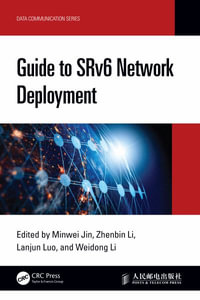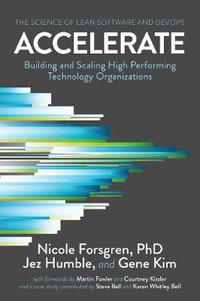| An overview of grid computing | p. 1 |
| Introduction | p. 1 |
| Classifying grid usages | p. 1 |
| Classifying grid systems | p. 2 |
| Definitions | p. 3 |
| Evolution of grid computing | p. 5 |
| First generation: early metacomputing environments | p. 6 |
| Second generation: core grid technologies | p. 8 |
| Third generation: service oriented approach | p. 17 |
| Concluding remarks | p. 17 |
| References | p. 18 |
| Grid computing and Web services | p. 23 |
| Introduction | p. 23 |
| Web services | p. 24 |
| Web services characteristics | p. 25 |
| Web services architecture | p. 26 |
| Web services protocols and technology | p. 28 |
| WSDL, UDDI | p. 29 |
| Web services encoding and transport | p. 32 |
| Emerging standards | p. 36 |
| Grid services | p. 38 |
| Open Grid Services Infrastructure (OGSI) | p. 39 |
| Web Services Resource Framework (WSRF) | p. 43 |
| OSGI vs. WSRF | p. 49 |
| Concluding remarks | p. 54 |
| References | p. 55 |
| Data management in grid environments | p. 61 |
| Introduction | p. 61 |
| The scientific challenges | p. 61 |
| Major data grid efforts today | p. 65 |
| Data grid | p. 65 |
| American data grid projects | p. 66 |
| European data grid projects | p. 71 |
| Data management challenges in grid environments | p. 76 |
| Overview of existing solutions | p. 79 |
| Data transport mechanism | p. 79 |
| Logical file system interface | p. 83 |
| Data replication and storage | p. 85 |
| Data allocation and scheduling | p. 88 |
| Concluding remarks | p. 89 |
| References | p. 90 |
| Peer-to-peer data management | p. 97 |
| Introduction | p. 97 |
| Defining peer-to-peer | p. 98 |
| History | p. 98 |
| Terminology | p. 98 |
| Characteristics | p. 99 |
| Data location and routing algorithms | p. 100 |
| P2P evolution | p. 101 |
| Unstructured P2P systems | p. 101 |
| Structured P2P systems | p. 108 |
| Hybrid P2P systems | p. 115 |
| Shortcomings and improvements of P2P systems | p. 120 |
| Unstructured P2P systems | p. 120 |
| Structured and hybrid P2P systems | p. 122 |
| Concluding remarks | p. 125 |
| References | p. 126 |
| Grid enabled virtual file systems | p. 131 |
| Introduction | p. 131 |
| Background | p. 132 |
| Overview of file system | p. 132 |
| Requirements for grid virtual file systems | p. 133 |
| Overview of file transfer protocols | p. 134 |
| Data access problems in the grid | p. 136 |
| Related work | p. 137 |
| GRAVY: GRid-enAbled Virtual file sYstem | p. 139 |
| Design overview | p. 139 |
| Component description | p. 139 |
| An example of user interaction | p. 141 |
| Architectural issues | p. 141 |
| Protocol resolution | p. 141 |
| Naming management | p. 144 |
| GridFile - virtual file interface | p. 145 |
| Data access | p. 146 |
| Data transfer | p. 149 |
| Use cases | p. 150 |
| Interaction with heterogeneous resources | p. 150 |
| Handling file transfers for grid jobs | p. 151 |
| Experimental results | p. 152 |
| Support for multiple protocols | p. 152 |
| Performance | p. 154 |
| Concluding remarks | p. 155 |
| References | p. 157 |
| Scheduling grid services | p. 161 |
| Introduction | p. 161 |
| Scheduling algorithms and strategies | p. 162 |
| Static heuristics | p. 162 |
| Dynamic heuristics | p. 165 |
| Grid scheduling algorithms and strategies | p. 168 |
| Architecture | p. 170 |
| Meta-schedulers | p. 171 |
| Grid scheduling scenarios | p. 173 |
| Metascheduling schemes | p. 173 |
| Service discovery | p. 174 |
| Service directories | p. 174 |
| Techniques syntactic and semantic | p. 176 |
| Resource information | p. 178 |
| Globus Toolkit information service | p. 179 |
| Other information services and providers | p. 180 |
| Data-intensive service scheduling | p. 181 |
| Algorithms | p. 181 |
| Architecture of data grid | p. 184 |
| Fault tolerant | p. 185 |
| Fault-tolerant algorithms | p. 185 |
| Fault-tolerant techniques | p. 186 |
| Grid fault tolerance | p. 187 |
| Concluding remarks | p. 188 |
| References | p. 189 |
| Workflow design and portal | p. 195 |
| Overview | p. 195 |
| Management systems | p. 196 |
| The Triana system | p. 197 |
| Condor DAGMan | p. 197 |
| Scientific Workflow management and the Kepler system | p. 197 |
| Taverna in life science applications | p. 198 |
| Karajan | p. 198 |
| Workflow management in GrADS | p. 199 |
| Petri net model | p. 200 |
| Workflow specification languages | p. 200 |
| Web Services Flow Language (WSFL) | p. 201 |
| Grid services flow languages | p. 201 |
| XLANG: Web services for business process design | p. 202 |
| Business Process Execution Language for Web Services (BPEL4WS) | p. 202 |
| DAML-S | p. 203 |
| Scheduling and rescheduling | p. 203 |
| Scheduling architecture | p. 203 |
| Scheduling algorithms | p. 205 |
| Decision making | p. 206 |
| Scheduling strategies | p. 207 |
| Rescheduling | p. 207 |
| Portal integration | p. 208 |
| P-GRADE portal | p. 209 |
| Other portal systems | p. 210 |
| A case study on the use of workflow technologies for scientific analysis | p. 211 |
| Motivation | p. 211 |
| The LIGO data grid infrastructure | p. 211 |
| LIGO workflows | p. 211 |
| Concluding remarks | p. 212 |
| References | p. 214 |
| Semantic web | p. 217 |
| Introduction | p. 217 |
| Web and semantic web | p. 217 |
| Ontologies | p. 218 |
| Semantic grid | p. 220 |
| The grid and the semantic web | p. 220 |
| Current status of the semantic grid | p. 222 |
| Challenges to be overcome | p. 223 |
| Semantic web services | p. 224 |
| Service description | p. 224 |
| WS-Resources description and shortcomings | p. 225 |
| Semantic WS-Resource description proposals | p. 227 |
| Semantic matching of web services | p. 227 |
| Matchmaking Systems | p. 227 |
| Matching engine | p. 228 |
| Semantic matching algorithms | p. 229 |
| Semantic workflow | p. 230 |
| Model for composing workflows | p. 230 |
| Abstract semantic Web service and semantic template | p. 232 |
| Automatic Web service composition | p. 233 |
| Concluding remarks | p. 234 |
| References | p. 235 |
| Integration of scientific applications | p. 237 |
| Introduction | p. 237 |
| Framework | p. 239 |
| Java wrapping | p. 239 |
| Grid service wrapping | p. 239 |
| WSRF resources | p. 241 |
| Implementation | p. 241 |
| Globus Toolkit and GRAM | p. 241 |
| Architecture and interface | p. 242 |
| Job scheduling and submission | p. 244 |
| Code deployment | p. 248 |
| Security | p. 250 |
| Evaluation | p. 250 |
| Dynamic deployment experiments | p. 250 |
| Grid resource experiments | p. 251 |
| Concluding remarks | p. 252 |
| References | p. 254 |
| Potential for engineering and scientific computations | p. 259 |
| Introduction | p. 259 |
| Grid applications | p. 259 |
| Multi-objective optimization problems solving | p. 260 |
| Air quality predicting in a grid environment | p. 261 |
| Peer-to-peer media streaming systems | p. 262 |
| Grid projects | p. 263 |
| GridLab project | p. 263 |
| EU DataGrid | p. 264 |
| ShanghaiGrid | p. 265 |
| Grid service programming | p. 266 |
| A short introduction to Web services and WSRF | p. 267 |
| Java WS core programming | p. 267 |
| GT4 Security | p. 269 |
| Concluding remarks | p. 270 |
| References | p. 271 |
| Conclusions | p. 273 |
| Summary | p. 273 |
| Data management | p. 273 |
| Execution management | p. 274 |
| Future for grid computing | p. 276 |
| Glossary | p. 279 |
| Index | p. 295 |
| Table of Contents provided by Ingram. All Rights Reserved. |
























